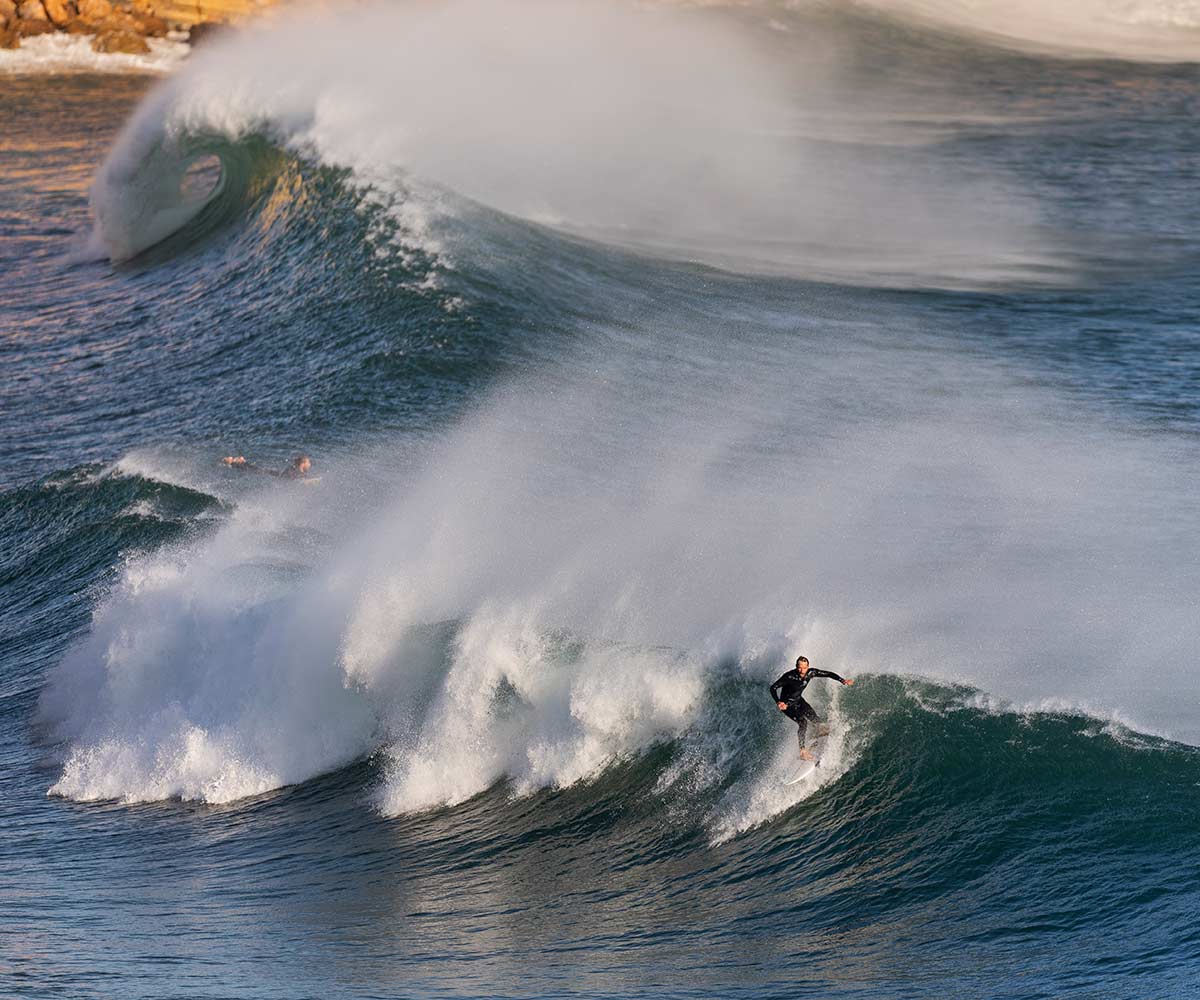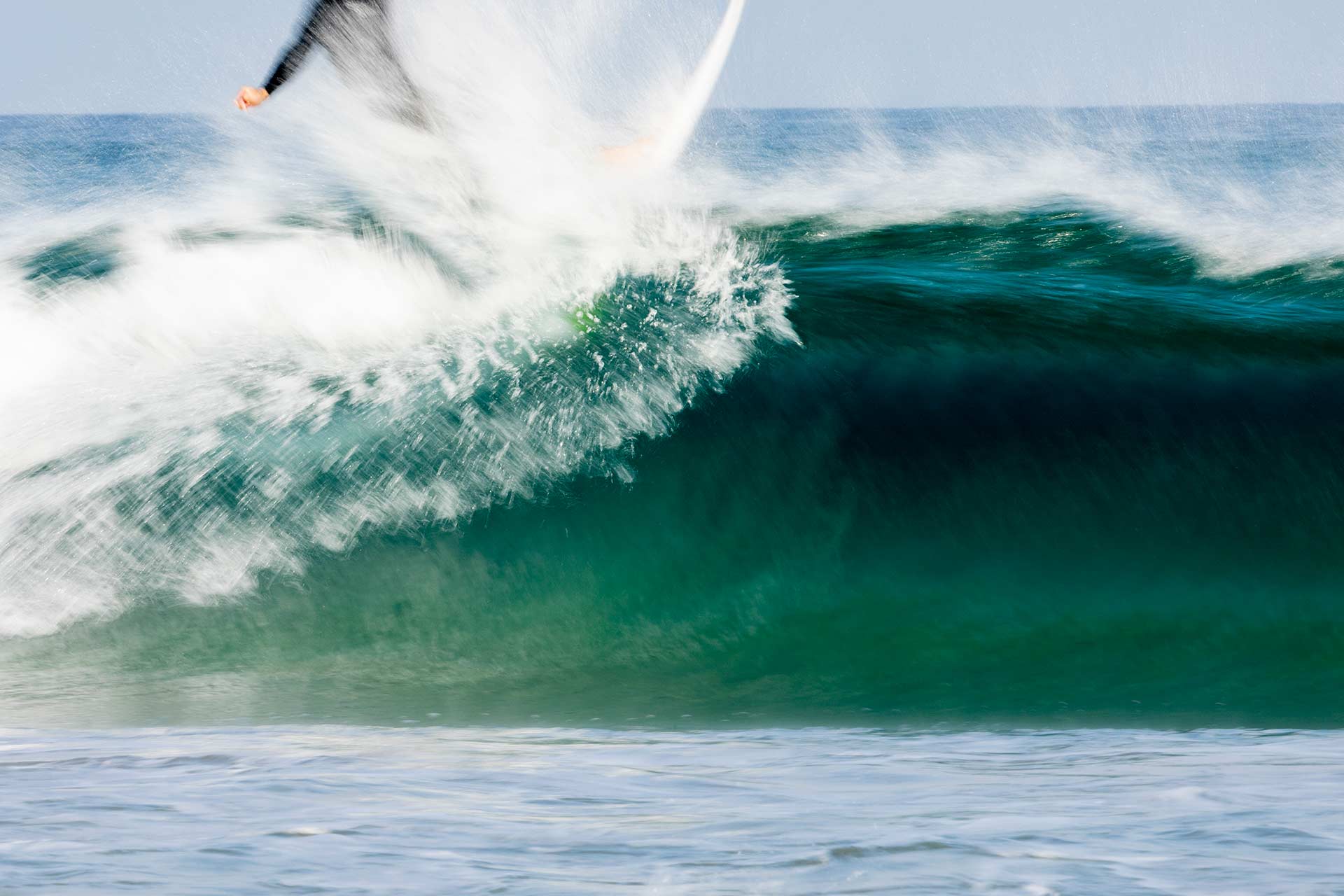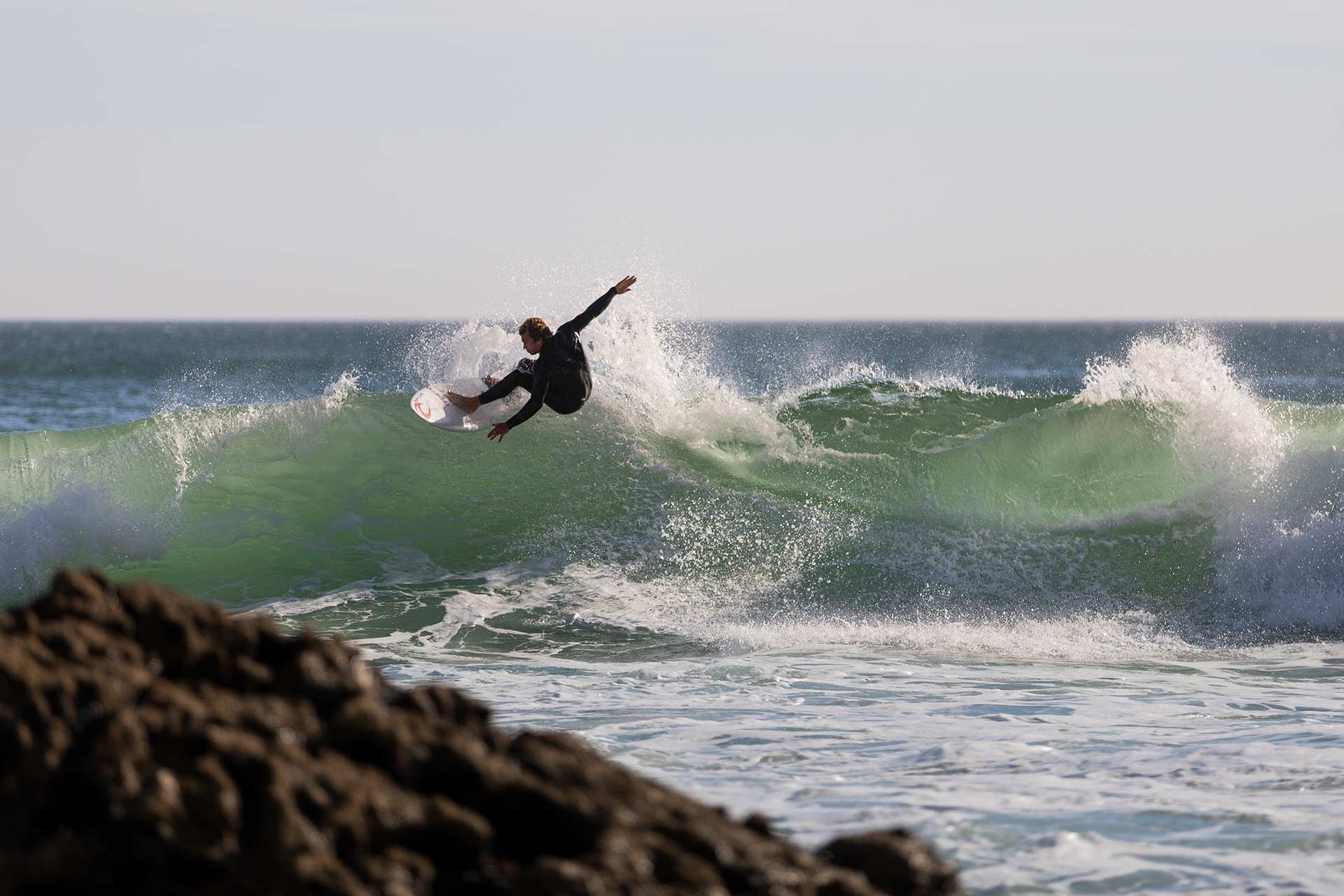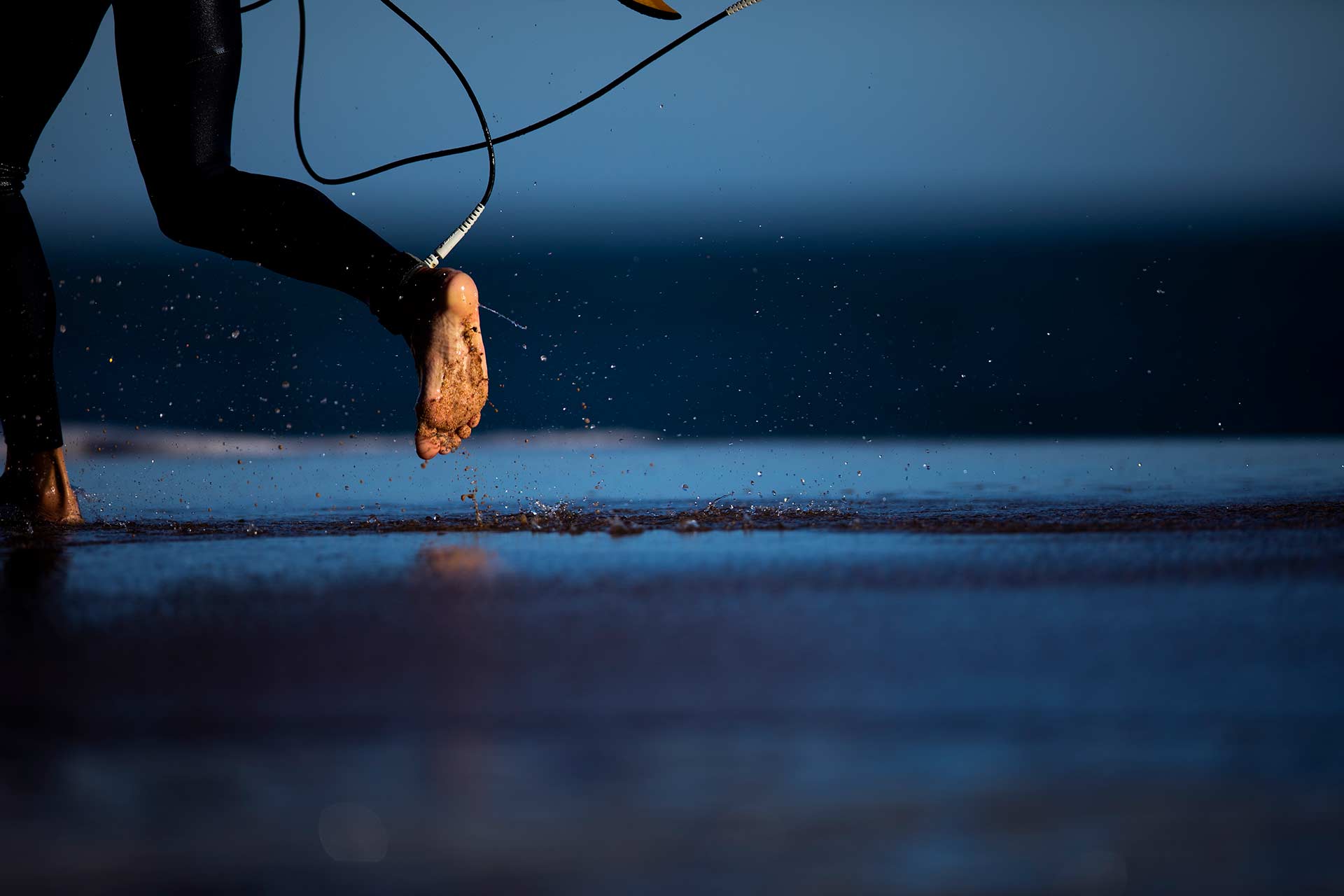How to capture the dynamics and power in stunning photos
Reading time approx. 4 minutes
Helpful?

How to capture the dynamics and power in stunning photos
Reading time approx. 4 minutes
Helpful?
Good preparation, the right camera settings and, of course, trial and error and practice are the most important ingredients for taking spectacular photos of the fast movements involved in surfing.
For his book The Flow, Dominik spent over three months travelling to the most exciting surf spots in Europe with his bus, boards, camera equipment and laptop to capture the soul of surfing. He also shares his experiences and knowledge through Canon Academy webinars and workshops: "I have photographed a lot of sports, but I get the best action shots in the sports that interest me and that I shoot regularly.
Research the sport you want to shoot and look at other images for inspiration. By studying the sport, you can better anticipate what will happen next. It's also more fun to photograph something you personally enjoy".
Talk to the athletes on location before your photo session so they can tell you where the action is and where special moves such as jumps or turns are possible. Many surfers, windsurfers and kitesurfers are just as keen to get great photos as you are. By telling them what you want, you can have more control over the composition of the image and plan your shot better, unlike at a football match.
Settings and features
The EOS R system's fast autofocus makes it ideal for sports photography. But you can also get perfect results with a Canon EOS DSLR. A good lens is important; I recommend a fast telephoto lens. If you can get close enough to the surf spot (cliff, beach or boat), a telephoto zoom lens with a focal length of 70-200mm and a speed of f/2.8 is brilliant. If you are a little further away, focal lengths in the 400mm range are suitable. Of course, when you are closer to the action, wide-angle shots are also very nice.
Short exposure times are important to capture the surf action, including the splashes, so work with an open aperture. If it's cloudy or you're shooting in low light, increase the ISO so that you can still shoot fast in low light.
Try to imagine the picture you want to take and choose the autofocus areas accordingly, and make sure your subject is not always in the centre. Continuous focusing (AI SERVO) is also important. Fast burst shooting also helps you capture the perfect moment.


